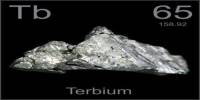Longitudinal waves are a type of wave that occurs when particles in a medium vibrate back and forth in the same direction as the wave. In contrast, transverse waves cause the particles of the medium to vibrate perpendicular to the wave’s direction.
Sound waves are a common example of longitudinal waves. The particles of the medium (usually air) vibrate back and forth in the same direction as the wave, transmitting sound energy from one location to another.
Longitudinal waves are waves in which the medium’s vibration is parallel to the direction of wave propagation and the medium’s displacement is in the same (or opposite) direction of wave propagation. Mechanical longitudinal waves are also known as compressional or compression waves because they compress and rarefy as they travel through a medium, and pressure waves because they cause pressure increases and decreases.
A wave along the length of a stretched Slinky toy, with the distance between coils increasing and decreasing, is an effective visualization. Sound waves (pressure vibrations, displacement particles, and particle velocity propagated in an elastic medium) and seismic P-waves (created by earthquakes and explosions) are real-world examples.
The transverse wave, in which the displacements of the medium are at right angles to the direction of propagation, is the other major type of wave. Transverse waves, for example, describe some bulk sound waves in solid materials (but not in fluids); these are also referred to as “shear waves” to distinguish them from the (longitudinal) pressure waves supported by these materials.
Characteristics of Longitudinal Waves
- Compression – In a longitudinal wave, compression is a region in which the particles of the wave are closest to each other.
- Rarefaction – Rarefaction in a longitudinal wave takes place when the particles are farthest apart from each other.
- Wavelength – The distance between two consecutive points in a longitudinal wave is known as wavelength. These consecutive points can be between two compressions or between two rarefactions.
- Amplitude – Amplitude is the maximum displacement of the particle from its rest point. In a longitudinal wave, the distance from the equilibrium position in the medium to compression or rarefaction is the amplitude.
- Period and Frequency – The time taken by the wave to move one wavelength is known as the period. The frequency of the longitudinal wave is the number of wavelengths per second.
Seismic waves, which are energy waves that travel through the Earth’s crust during an earthquake, are another example of longitudinal waves. Seismometers can detect these waves, which cause the ground to vibrate back and forth. Longitudinal waves can also be observed in other contexts, such as in fluids (where they are sometimes called pressure waves) and in certain types of electromagnetic radiation.
















